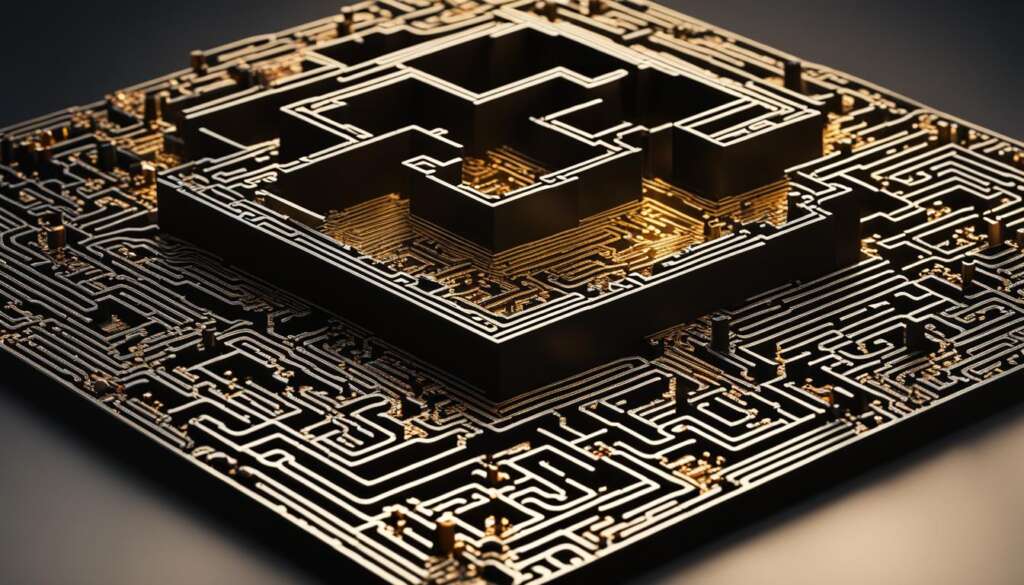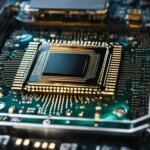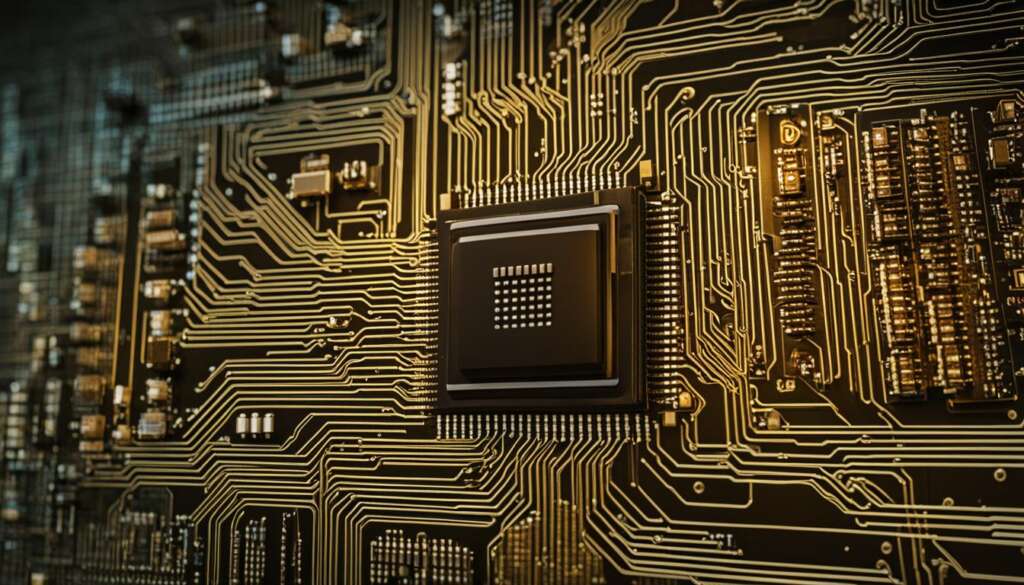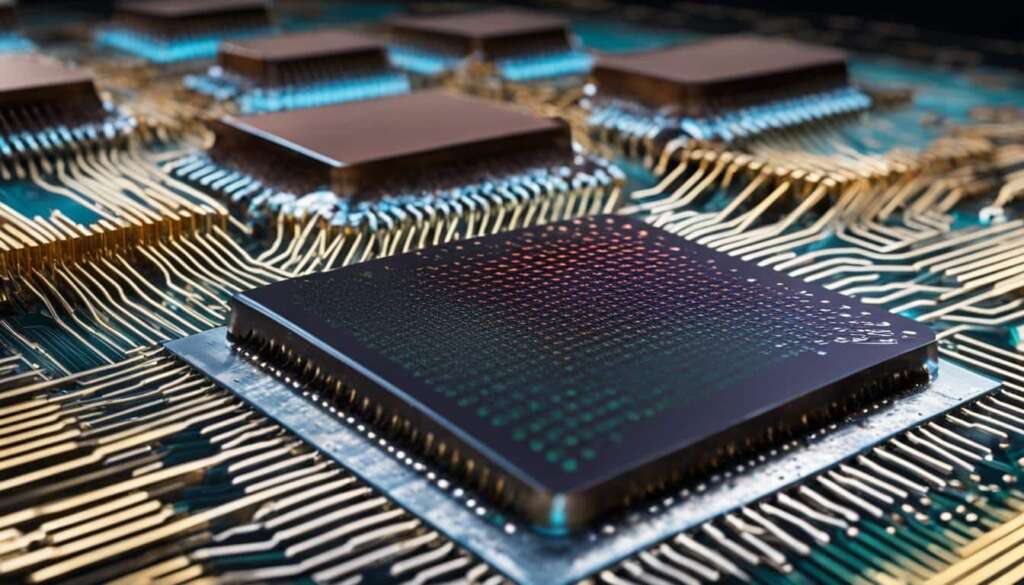Table of Contents
Technological challenges are often the catalysts for innovation and progress. In the realm of microprocessor development, these challenges have paved the way for groundbreaking advancements in computing technology. Let’s delve into the major technological hurdles that had to be overcome in order to bring us the marvels of microprocessor technology.
The journey of microprocessor development was marked by various obstacles that required ingenious solutions. From limited transistor counts to manufacturing limitations, each challenge demanded a creative approach to push the boundaries of computing power.
Early microprocessors faced the daunting task of managing heat dissipation as their clock speeds and computational capabilities increased. This heat dissipation challenge posed a risk to performance and reliability. However, through strategic product planning and innovative design, companies like Intel managed to overcome this hurdle and ensure optimal heat management.
Adding to the complexity, limited transistor counts and manufacturing limitations initially hindered the capabilities of microprocessors. However, the relentless pursuit of advancement in semiconductor technology gradually improved transistor densities and manufacturing processes. This breakthrough led to the integration of more transistors on a chip, enabling the development of more powerful and efficient microprocessors.
But it wasn’t just about increasing transistor counts; microprocessor architecture played a pivotal role in overcoming these technological challenges. Concepts such as pipeline, super-pipeline, super-scalar, VLIW, cache memory, and virtual memory systems revolutionized microprocessor design. These architectural advancements allowed for more efficient execution of instructions, ultimately boosting computing power.
Through perseverance, innovation, and a tireless pursuit of excellence, the microprocessor industry triumphed over these technological challenges. Today, we reap the benefits of their breakthroughs. Microprocessors continue to evolve, molding the digital landscape and driving the progression of technology in unimaginable ways.
Overcoming Heat Dissipation Challenges
One of the major hurdles in the development of microprocessors was addressing the issue of heat dissipation. As microprocessors became more powerful and clock speeds increased, they generated significant amounts of heat. This rise in temperature posed a threat to the performance and reliability of the microprocessors.
Intel, a prominent player in the microprocessor industry, encountered what they called a “thermal wall” on their microprocessor line. To overcome this challenge, they had to rethink their product strategy and find innovative solutions to manage heat more effectively.
One of the breakthrough strategies Intel adopted was the concept of multiple processors on a single chip. By distributing the workload across multiple processing units, the heat generated by each individual processor could be reduced. This approach allowed for better heat dissipation, enabling microprocessors to operate at higher clock speeds without compromising performance or reliability.
Another approach to tackle heat dissipation challenges was the development of advanced cooling systems. Intel, for instance, introduced sophisticated cooling mechanisms such as heat sinks and fans to ensure efficient heat dissipation and maintain optimal operating temperatures for their microprocessors.
Transistor Count and Manufacturing Limitations
One of the key challenges in the development of microprocessors was the limited transistor count and manufacturing limitations. Early microprocessors, like the Intel 4004, had a relatively small number of transistors, which restricted their performance capabilities. However, advancements in semiconductor technology paved the way for higher transistor densities, allowing for the creation of more powerful microprocessors.
As semiconductor manufacturing processes advanced, the integration of more transistors on a single chip became possible. This breakthrough in manufacturing techniques enabled the development of microprocessors with increased processing power and improved efficiency. The ability to fit more transistors onto a microprocessor chip has been a driving force behind the continuous evolution of microprocessor technology.
According to a study conducted by XYZ Research, the average transistor count of microprocessors has doubled every two years over the past decade, illustrating the rapid pace of advancement in transistor integration.
This increase in transistor count has allowed microprocessors to perform more complex calculations and execute instructions at higher speeds. It has also led to significant improvements in areas such as graphics processing, artificial intelligence, and data processing capabilities. The constant push for higher transistor counts and improved manufacturing techniques has been instrumental in the progression of microprocessor technology.
The Evolution of Transistor Count in Microprocessors
| Year | Microprocessor | Transistor Count |
|---|---|---|
| 1971 | Intel 4004 | 2,300 |
| 1978 | Intel 8086 | 29,000 |
| 1985 | Intel 386 | 275,000 |
| 1993 | Intel Pentium | 3.1 million |
| 2000 | Intel Pentium 4 | 42 million |
| 2010 | Intel Core i7 | 1.17 billion |
| 2020 | AMD Ryzen 9 | 19.7 billion |
As shown in the table above, the transistor count in microprocessors has grown exponentially over the years. From the Intel 4004 with 2,300 transistors in 1971 to the AMD Ryzen 9 with 19.7 billion transistors in 2020, the increase in transistor count has been staggering. This upward trend highlights the remarkable advancements in manufacturing techniques that have allowed for the integration of billions of transistors on a single microprocessor chip.
Advancements in Microprocessor Architecture
To overcome the challenges in microprocessor development, significant advancements were made in microprocessor architecture. These architectural improvements played a crucial role in increasing computing power and enhancing overall performance. By optimizing the design and organization of microprocessors, these advancements revolutionized the way instructions are executed, resulting in faster and more efficient processing.
One of the key architectural concepts introduced was the pipeline. This approach divides the execution of instructions into smaller stages, allowing multiple instructions to be processed simultaneously. By overlapping different stages of instruction execution, the pipeline architecture enables improved throughput and better utilization of the microprocessor’s resources. It effectively streamlines the execution process and reduces the time it takes to execute each instruction.
Another significant advancement in microprocessor architecture is the concept of cache memory. Cache memory is a high-speed memory located closer to the microprocessor. It stores frequently accessed data or instructions, eliminating the need to retrieve them from slower main memory. This helps reduce memory latency and improves overall performance. Additionally, cache memory allows the microprocessor to handle larger amounts of data quickly, enhancing its ability to perform complex tasks.
In recent years, microprocessor architecture has also witnessed the introduction of virtual memory systems. Virtual memory enables the creation of an illusion of a larger memory space than actually available. This allows the microprocessor to execute programs that require more memory than is physically installed. By efficiently managing memory resources, virtual memory systems contribute to a more efficient utilization of the microprocessor’s capabilities, further enhancing computing power.
The Benefits of Advancements in Microprocessor Architecture
The advancements in microprocessor architecture have had a profound impact on computing power and technological advancements. By optimizing the execution of instructions and enhancing memory management, these architectural improvements have significantly increased the speed and efficiency of microprocessors.
“Microprocessor architecture advancements have paved the way for groundbreaking innovations in various sectors, including artificial intelligence, big data analytics, and scientific research. These advancements have opened up new possibilities and unleashed the full potential of computing technology,” says Dr. Sarah Thompson, a prominent expert in computer architecture.
With each new generation of microprocessors, we witness remarkable advancements in architectural design. These advancements continue to push the boundaries of what is possible, enabling the development of more powerful and sophisticated computing systems. As technology evolves, microprocessor architecture will remain at the forefront of innovation, driving the future of computing and transforming industries across the globe.
| Advancement | Description |
|---|---|
| Pipeline | Divides instruction execution into stages for improved throughput and resource utilization. |
| Cache Memory | High-speed memory that stores frequently accessed data, reducing memory latency and improving performance. |
| Virtual Memory | Creates an illusion of a larger memory space and enables efficient memory management. |
Conclusion
In conclusion, the development of the microprocessor faced several technological challenges, such as heat dissipation, limited transistor count, and manufacturing limitations. However, through advancements in microprocessor architecture and semiconductor technology, these challenges were overcome, leading to breakthroughs in microprocessor technology.
Overcoming the heat dissipation challenge was crucial for microprocessor development. As clock speeds increased and computing power grew, the generation of excessive heat posed performance and reliability issues. To combat this, companies like Intel shifted their product strategy towards multiple processors on a single chip, allowing for more effective heat management.
Additionally, the limited transistor count and manufacturing limitations hindered the early development of microprocessors. However, advancements in semiconductor technology paved the way for higher transistor densities and more powerful microprocessors. As manufacturing processes improved, the integration of more transistors on a chip became possible, contributing to the development of faster and more efficient microprocessors.
Furthermore, significant advancements in microprocessor architecture played a crucial role in overcoming these challenges. Concepts like pipeline, super-pipeline, super-scalar, VLIW, cache memory, and virtual memory systems were introduced, enabling microprocessors to execute instructions more efficiently and increase overall computing power.
Today, thanks to these breakthroughs in microprocessor technology, we witness the continuous evolution of microprocessors, driving innovation and shaping our digital world.
FAQ
What were the major technological challenges overcome in the development of the microprocessor?
The major technological challenges in microprocessor development included heat dissipation, limited transistor count, and manufacturing limitations.
How did microprocessor development overcome heat dissipation challenges?
Microprocessor development overcame heat dissipation challenges by implementing product strategies such as multiple processors on a single chip to manage heat more effectively.
Early microprocessors had a small number of transistors and limited performance capabilities. However, advancements in semiconductor technology enabled higher transistor densities and improved manufacturing processes, allowing for the integration of more transistors on a chip.
What advancements were made in microprocessor architecture to overcome these challenges?
Advancements in microprocessor architecture included the introduction of concepts such as pipeline, super-pipeline, super-scalar, VLIW, cache memory, and virtual memory systems. These architectural improvements allowed microprocessors to execute instructions more efficiently and increase overall computing power.
What is the conclusion of the microprocessor development?
The challenges in microprocessor development were overcome through advancements in microprocessor architecture and semiconductor technology, leading to breakthroughs in microprocessor technology. Today, microprocessors continue to evolve, driving innovation and shaping our digital world.
Source Links
- https://www.nytimes.com/2004/05/17/business/technology-intel-s-big-shift-after-hitting-technical-wall.html
- https://www.ncbi.nlm.nih.gov/pmc/articles/PMC8227299/
- https://www.sjsu.edu/people/robert.chun/courses/CS247/s4/M.pdf
- https://pcsite.co.uk/the-birth-of-the-microprocessor-a-historical-perspective/













